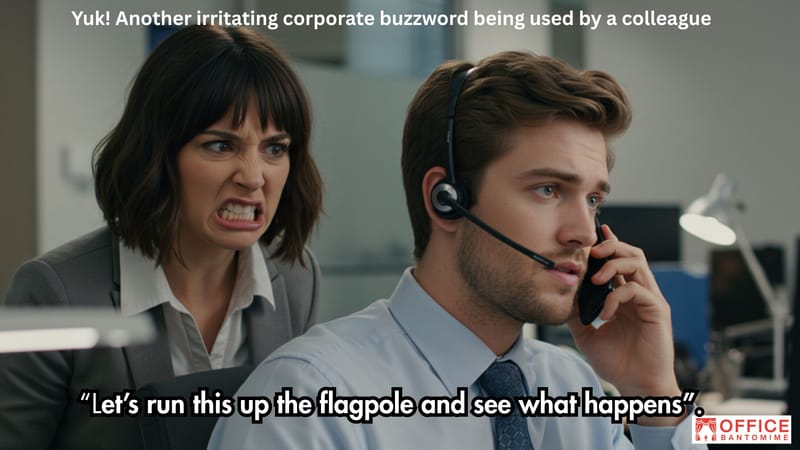"Workplace Witch Hunts: What's the Connection?"
Occasionally, within the office, the term "witch hunt" is used to describe a situation where an individual feels threatened or accused by others. However, it can also be employed positively.
For instance, when a recurring issue arises within the organisation regarding a lack of engagement with a valuable client, it becomes a cause for concern. This client has been a loyal source of revenue since the beginning, making it imperative to investigate why they are not receiving the necessary attention.
In such cases, it is possible that someone within the organisation feels a sense of guilt for not fulfilling their job responsibilities or for not following the correct procedures due to being misinformed.
To address this matter, a meeting will likely be arranged, involving representatives from different teams. During the discussion, one team member may initiate the conversation by stating, "Let's be clear, this isn't a witch hunt, but we need to identify the root cause of the problem. Can we further explore this issue with your colleagues to determine why it is.
Origin of the phrase
The witch trials that occurred between the 15th and 18th centuries in Europe and North America are where the term "witch hunt" first appeared. There was a widespread belief in the presence of witches during this time, who were portrayed as bad people with supernatural abilities and pacts with the devil. These allegations frequently originated from rumours, hearsay, or personal grievances against the accused.
Unfortunately, these accusations resulted in unfair trials where many people were put to death. Tens of thousands of people, especially women, are thought to have perished during this time due to witchcraft-related accusations. The precise figure fluctuates based on the moment and place.
The word "witch hunt" is still used in modern society to characterise the chase or close examination of people, teams, or organisations, especially in the context of the workplace, who are allegedly breaking rules or causing offence. It's crucial to remember that this usage of the phrase frequently has a negative meaning. An investigation or inquiry should be carried out objectively, without assuming anything unfounded or using discriminating tactics.
Accountability Without the Witch Hunt: Uniting Divisions in the Workplace
In the vast realm of organisations, accountability stands as a pillar for ensuring the best interests of the business. When disruptions occur within a division, be it caused by an individual or a group, the need for investigation arises, especially when the impact affects the entire functioning of the division. However, in the absence of solid evidence, a peculiar phenomenon tends to emerge: the dreaded "witch hunt."
It's only then we have to navigate the treacherous waters of blame and resentment within organisations and explore the importance of collaboration and support.
In the intricate tapestry of corporate life, different departments, divisions, and functions can often develop a tribal mindset, each with its own set of priorities and objectives.
When an issue arises, it becomes all too easy to point fingers and assign blame to other areas of the business. Like villagers armed with pitchforks, divisions may embark on a metaphorical witch hunt, fueled by a desire to protect their own interests.

For instance, the Marketing team faces a disruption in service, and the blame game begins. The finger of suspicion is pointed at the Operations division, who are promptly labeled as the culprits.
With tensions rising and resentment brewing, what was once a harmonious workplace transforms into a battleground of in-house fighting and finger-pointing.
However, there is a better way. Instead of succumbing to the allure of the witch hunt, organizations can foster a culture of collaboration and support.
By shifting the focus from assigning blame to finding solutions, divisions can work together to address issues and prevent future disruptions. This requires a shared understanding that accountability should not be synonymous with a blame game.
When faced with a disruption, it is essential to approach the situation with a spirit of collaboration.
Rather than assuming ill intentions or immediately accusing others, organizations can encourage open dialogue and fact-based investigations. By seeking evidence and conducting fair assessments, a transparent and unbiased approach can be established, allowing for a more constructive resolution.
Moreover, organisations must recognize the importance of support. When a division or individual is under scrutiny, it is crucial to provide them with the necessary resources and guidance to rectify the situation.
Instead of isolating and alienating them, offering support fosters a sense of unity and shared responsibility.

In the pursuit of accountability, let us remember that the goal is not to point fingers or initiate a witch hunt, but rather to strengthen the bonds between divisions and promote a collective sense of ownership.
By embracing collaboration, organisations can ensure that disruptions are addressed in a manner that promotes growth, harmony, and innovation.
Lets cut out the witch hunt and embark on a journey of collaboration and support, where divisions come together to face challenges as a unified force. By doing so, we can create a workplace that thrives on shared responsibility and achieves greatness by harnessing the collective power of its people.






